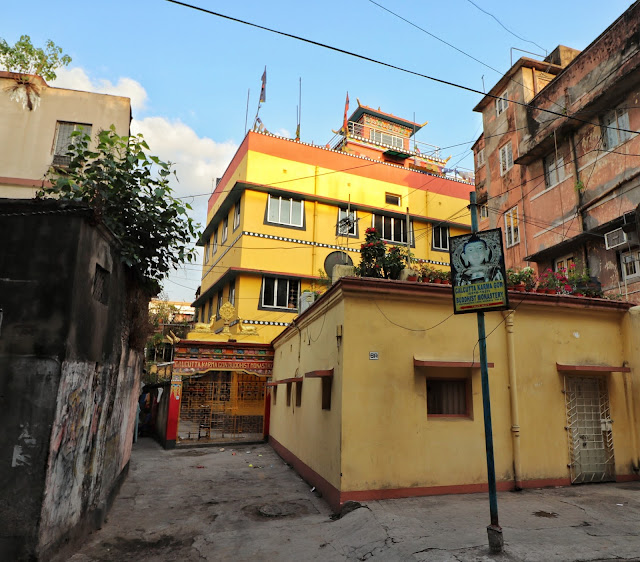Burrabazar, the commercial nucleus of Kolkata, is like a labyrinth to anyone who is not familiar with its lanes and bylanes. Stretching from the Ganesh Talkies in the north to the BBD Bag in the south and from the C R Avenue in the east to the Howrah Bridge in the west, the approximate one sq.km. area probably records the highest footfall in a day than any other location of the City. But unlike the rest of Kolkata, the names of the lanes and by-lanes do not really matter here. Most of the people visiting Burrabazar used to acquaint themselves with the commodity or building based demarcations viz. the different sub-markets (patti) like Sonapatti, Tulapatti, Masalapatti or buildings (katra meaning roadside inn or colonnaded structure in Arabic/Persian) housing specific products, like Raja Katra, Manohar Das Katra, Sadasukh Katra etc. A majority of the pathways with their names are now in oblivion. Shiv Nandy Lane in Posta near Ganesh Talkies is one such by-lane.
It would be a bit of an exaggeration to say that I went hunting down this lane for my story. But in fact, I accidentally came across the alley while researching for another story of mine. I was in Chitpore, Ganesh Talkies, shooting the Adi Brahmo Samaj house near Jorasanko Thakurbari gateway. Suddenly, on the opposite footpath, a street name plate intrigued me - 'Shiv Thakur Lane'. Bound with a curiosity and a hope to find another derelict century old Shiva Temple, I entered the hardly 3 ft. wide alley. After a few yards, it opens up to a rather wide lane, making me to continue my quest. Though I did not find the temple but another street name plate suddenly tickled my memory - 'Shiv Nandy Lane', the name itself seemed to be quite familiar to my mind. A quick googling revealed the mention of this name in Amitabha Gupta's blog post about Optical Telegraph. Shiv Nandy or Shiv Chandra Nandy was the Bengali man behind the first electric telegraph line in India, more than a century ago.
Wanderlust decided to go on exploring...
It would be a bit of an exaggeration to say that I went hunting down this lane for my story. But in fact, I accidentally came across the alley while researching for another story of mine. I was in Chitpore, Ganesh Talkies, shooting the Adi Brahmo Samaj house near Jorasanko Thakurbari gateway. Suddenly, on the opposite footpath, a street name plate intrigued me - 'Shiv Thakur Lane'. Bound with a curiosity and a hope to find another derelict century old Shiva Temple, I entered the hardly 3 ft. wide alley. After a few yards, it opens up to a rather wide lane, making me to continue my quest. Though I did not find the temple but another street name plate suddenly tickled my memory - 'Shiv Nandy Lane', the name itself seemed to be quite familiar to my mind. A quick googling revealed the mention of this name in Amitabha Gupta's blog post about Optical Telegraph. Shiv Nandy or Shiv Chandra Nandy was the Bengali man behind the first electric telegraph line in India, more than a century ago.
Wanderlust decided to go on exploring...






